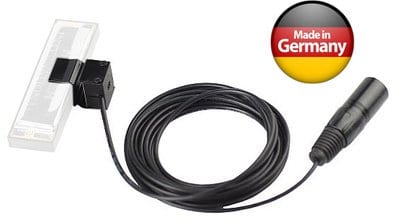If there is one sound, characteristic to the blues, it’s the harmonica. This wind instrument, small in size, is a descendant of the accordion and has been a favourite among hustlers, globetrotters and buskers. It appeared in the US at the same time as the birth of the blues and its development and evolution are credited to the innovative style and techniques that came from blues musicians. Today, major manufacturers of diatonic harmonicas are CA Seydel Söhne, Hohner and Lee Oskar. There are also more affordable alternatives such as Harley Benton .
Advice
There are many types of harmonicas, but the most prevalent in this style of music is the « diatonic harmonica » aka « blues harp ». As the name suggests this type of harmonica corresponds to a diatonic scale equivalent to that of a piano and of unique tonality. The most common and most suitable to enter the world of the harmonica for blues tonality is in C. Although this type of harmonica is primarily intended for blues, it is also frequently found in rock music, folk, country and bluegrass.
There are mainly three materials used in manufacturing diatonic harmonicas. There’s
wood, which according to some, particularly offers a warmer sound, but has the disadvantage of leakage unlike plastic, which is easier to maintain and is more affordable. Metal is still used on the bodies of top models with numerous benefits such as power and clarity.
And on stage, you can play live with a special microphone for your harmonica, known as a bullet microphone. Carbon microphones often offer a rusty tone and distortion much recognized in the blues.
Technique
The first thing to consider is how to hold the harmonica. It should be completely grasped along your thumb (at the bottom) and your index finger (at the top). Your other hand can be placed at the back of the harmonica with the option to cover and uncover all holes, while producing the vibrato effect or WA-WA.
As mentioned earlier the harmonica is a wind instrument, so consequently you will have to work your lungs. In order to play this instrument, it is very important to breathe abdominally using your diaphragm. Breathing should be done deeply as to avoid running out of breath.
To produce a single note by isolating holes, you must practice blocking them using your lips or tongue. Blocking with your tongue allows for much more complex movements than blocking with your lips, however blocking with your mouth is easier for “bends” and “over-bends”, as opposed to your tongue.
Unlike chromatic harmonicas, diatonic ones are characterized by requiring additional techniques such as “bending” to get to play any note of a scale. This unique effect in “bending” or “distorting” the note is to lower the tone frequency. Actually it’s a “mistake”, as the instrument was not designed for this purpose. The physical explanation of this is somewhat complex, but could be summed up in the air both blown and drawn produces a vibration that resonates both reeds. A common problem in “bending” is blowing too strong, which damages the reeds to eventually requiring replacement.
Maintenance
Although it’s an economical instrument, it manages to require minimal care in keeping it in good condition. The harmonica is in continuous contact with saliva and this eventually leaves residues. Although most are treated to withstand moisture, it’s still an issue and particularly affects harmonicas of poorly sealed timber. To remove the residual saliva, moisten a small brush and without apprehension gently brush through the holes while always facing down to allow the residue to wash out. A small washcloth may also come in handy when you’re done playing to further avoid excess saliva. You can always dissemble your harmonica for a more thorough maintenance, but that’s something I’ll leave for later.
There are many accessories for your harmonica such as hands free support, and belts that allow you to have all your harmonicas at hand. Manufacturers also offer sets of blades and replacement shells as well as cases and cleaning kits.
Finally, it’s recommended not to share your harmonica as they are somewhat personal. Furthermore, they are best stored indoors or in ventilated areas to avoid the accumulation of dust and moisture. And unless your name is Bleeding Gums Murphy, good oral hygiene will always help with the maintenance of your pocket instrument.














Comments 4